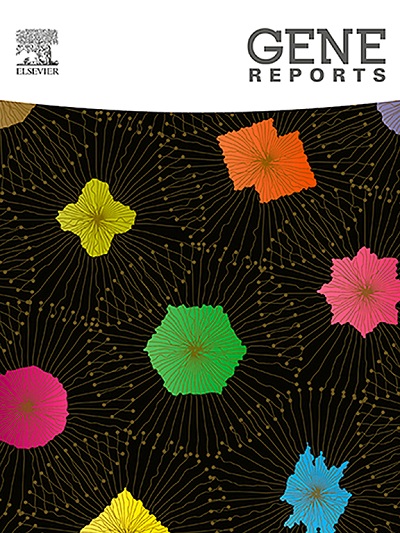Reference genes assessment and selection for expression analyses by qRT-PCR in Euwallacea interjectus
IF 1
Q4 GENETICS & HEREDITY
引用次数: 0
Abstract
Euallacea interjectus (Coleoptera, Curculionidae: Scolytinae) is an emerging pest in poplar plantations, capable of parasitizing living trees and cultivating Ambrosia Fusarium Clade (AFC) fungi as a nutritional source. Host trees infested by E. interjectus experience severe decline and wilting symptoms. Despite the considerable impact of E. interjectus, no reference genes for gene expression analysis have been documented for this species. This study identified 12 reference genes from the E. interjectus transcriptome. Their expression genes were evaluated using RT-qPCR and assessed through five methodologies: CT value calculation, BestKeeper, NormFinder, RefFinder, and geNorm. Among the identified genes, EIS6K1, EITOR, EIRPL13, and EIRPL18 exhibited the highest stability in female specimens, while EIPRS3a and EIRPS18 were the most stable in male specimens. These findings confirm the reliability of the selected algorithms and provide a strong foundation for future research in molecular biology and pest control strategies.
白蜡菊内参基因的筛选及qRT-PCR表达分析
白杨是杨树人工林中一种新兴害虫,能寄生在活树上,培养出镰刀菌(Ambrosia Fusarium Clade, AFC)真菌作为营养来源。被蠓侵染的寄主树木会出现严重的衰退和枯萎症状。尽管有相当大的影响,但没有记录到该物种基因表达分析的参考基因。本研究从interintertus转录组中鉴定出12个内参基因。通过CT值计算、BestKeeper、NormFinder、RefFinder和geNorm五种方法评估其表达基因。在所鉴定的基因中,EIS6K1、EITOR、EIRPL13和EIRPL18在雌性标本中稳定性最高,而EIPRS3a和EIRPS18在雄性标本中稳定性最高。这些发现证实了所选算法的可靠性,并为未来分子生物学和害虫防治策略的研究提供了坚实的基础。
本文章由计算机程序翻译,如有差异,请以英文原文为准。
求助全文
约1分钟内获得全文
求助全文
来源期刊

Gene Reports
Biochemistry, Genetics and Molecular Biology-Genetics
CiteScore
3.30
自引率
7.70%
发文量
246
审稿时长
49 days
期刊介绍:
Gene Reports publishes papers that focus on the regulation, expression, function and evolution of genes in all biological contexts, including all prokaryotic and eukaryotic organisms, as well as viruses. Gene Reports strives to be a very diverse journal and topics in all fields will be considered for publication. Although not limited to the following, some general topics include: DNA Organization, Replication & Evolution -Focus on genomic DNA (chromosomal organization, comparative genomics, DNA replication, DNA repair, mobile DNA, mitochondrial DNA, chloroplast DNA). Expression & Function - Focus on functional RNAs (microRNAs, tRNAs, rRNAs, mRNA splicing, alternative polyadenylation) Regulation - Focus on processes that mediate gene-read out (epigenetics, chromatin, histone code, transcription, translation, protein degradation). Cell Signaling - Focus on mechanisms that control information flow into the nucleus to control gene expression (kinase and phosphatase pathways controlled by extra-cellular ligands, Wnt, Notch, TGFbeta/BMPs, FGFs, IGFs etc.) Profiling of gene expression and genetic variation - Focus on high throughput approaches (e.g., DeepSeq, ChIP-Seq, Affymetrix microarrays, proteomics) that define gene regulatory circuitry, molecular pathways and protein/protein networks. Genetics - Focus on development in model organisms (e.g., mouse, frog, fruit fly, worm), human genetic variation, population genetics, as well as agricultural and veterinary genetics. Molecular Pathology & Regenerative Medicine - Focus on the deregulation of molecular processes in human diseases and mechanisms supporting regeneration of tissues through pluripotent or multipotent stem cells.
 求助内容:
求助内容: 应助结果提醒方式:
应助结果提醒方式:


